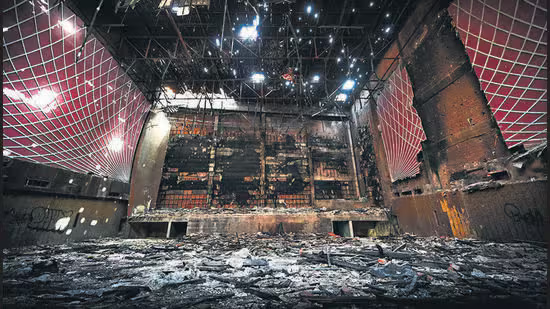Mid-Air Blowout: How a Missing Bolt on a Boeing 737 Became a Masterclass in Quality Control.
Published on September 12, 2025 by MoreMeets Team

On January 5, 2024, passengers on Alaska Airlines Flight 1282 experienced a terrifying ordeal. Just minutes after takeoff, a large panel on the side of the brand-new Boeing 737 MAX aircraft—a "door plug" used to seal an unused emergency exit—blew out, causing explosive decompression at 16,000 feet. Miraculously, no one was seriously injured, but the incident sent shockwaves through the aviation industry.
The initial findings from the National Transportation Safety Board (NTSB) were stunningly simple and deeply troubling: the four bolts designed to secure the door plug to the airframe were missing. They were likely never installed after being removed during rework at the Boeing factory. This wasn't a complex design flaw; it was a basic, catastrophic lapse in the manufacturing and quality control process.
Failure Point 1: The Rework and Forgotten Bolts
The NTSB found the door plug had been opened at the factory to allow contractors to fix improperly installed rivets nearby. The investigation concluded that when this rework was completed, the four critical bolts were never re-installed. The interior cabin panel was then put back on, hiding the error from plain view.
Our IPQC checklist introduces a mandatory "Quality Gate." Work on a sub-assembly cannot proceed to the next stage until a separate QC inspector independently verifies (with a signature and timestamp) that all fasteners are correctly installed and torqued to specification. It creates an independent check that breaks the chain of error.
Failure Point 2: The Communication Gap
The work on the rivets and the subsequent re-fitting of the door plug was performed across different shifts. NTSB reports and insider accounts suggest a lack of clear, formal documentation about the status of the job. The incoming shift likely assumed the bolts had been re-installed and proceeded with fitting the interior panel.
This SOP mandates a detailed, written handover checklist. The outgoing team must explicitly state the job's exact status—what was completed, what was not, and the precise state of the hardware (e.g., "Door plug fitted, bolts NOT torqued"). The incoming team must sign the document, acknowledging they understand the status before starting work.
Failure Point 3: The Accountability Void
In the initial investigation, Boeing was reportedly unable to produce records showing who worked on the door plug and who was responsible for the final inspection. Because the work was not properly documented in a verifiable system, there was no clear, auditable record of the actions taken—or not taken.
This system ties every critical assembly step to the specific employee ID who performed it and the inspector ID who verified it. A completed digital or physical checklist becomes a permanent, auditable record. This creates undeniable accountability and makes it possible to trace an error back to its source, a core principle of modern manufacturing and a requirement in our Manufacturing Operations & EHS Pack.
Conclusion: You Can't Afford to Assume
The Boeing door plug incident is a powerful lesson for every operations manager. It proves that even in the most advanced manufacturing environments, the simplest steps are often the most critical. A physical or digital checklist that must be completed at each critical stage of a process is not bureaucracy. It is the most effective tool ever invented to prevent human error and ensure safety and quality.
Continue Your Journey to Excellence
The concepts in this article are operationalized in the following toolkit:
Manufacturing Operations & EHS Pack
Premium Pack
Explore The Full Toolkit

